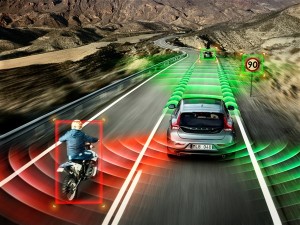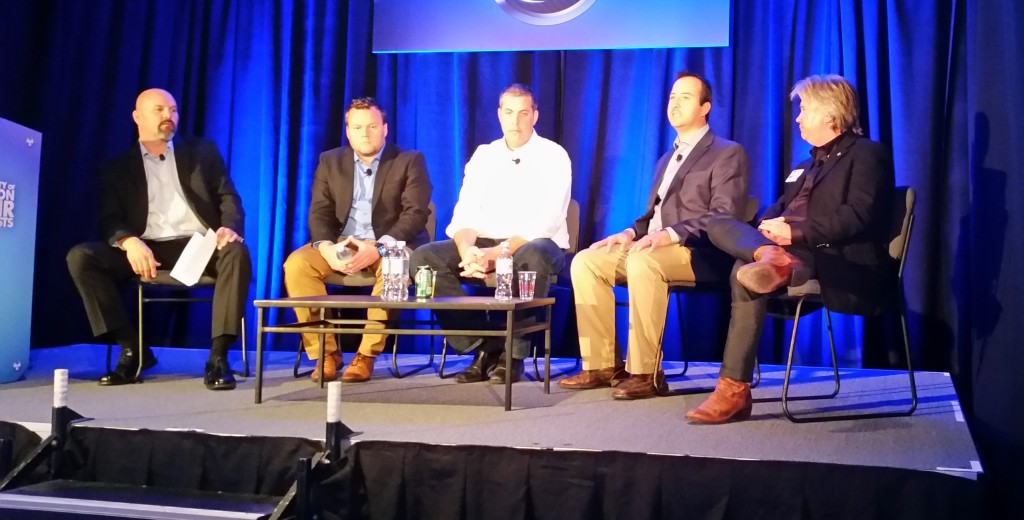
With new technology in cars, calibration becomes vital with changes
By onEducation | Market Trends | Repair Operations | Technology
It is shockingly easy to skew or obscure driver-assist sensors on modern cars, based on what we learned from experts at SEMA.
Even something as simple different-sized tires can affect how a sensor calculates time until a collision, SEMA vehicle technology Vice President John Waraniak said Nov. 5 during the Society of Collision Repair Specialists’ OEM Technology Summit.
Or if you’re more ambitious — and SEMA is the show for that — and jack up or lower the vehicle, the “angle of incident” for a lane detection camera might change, rendering it inoperable, according to John Ellis of Ellis and Associates.
This means modders; consumers swapping out OEM tires for conditions, aesthetics or savings (who are modders too, Ellis observed); mechanics; and collision repairers must take special care to calibrate vehicles when appropriate so the technology keep occupants safe.
Calibration is a fancy term for basically telling the vehicle’s internal computers to readjust all the cameras, sensors and other technology to work properly from the car’s new specifications. Toyota collision repair training administrator Eric Mendoza likened it to adjusting an old bathroom scale so the needle sits properly at zero.
“You set it with a parameter,” he said, and the car thinks it just came off of the factory floor.
Calibration differs from scans, which look at a particular system for problems and which we’ll discuss in a future article. It can be required under a variety of collision repair conditions depending on the OEM (So check!), according to Jake Rodenroth, client services director at Collision Diagnostic Services. (See more CDS discussion of the issue and some OEM rules here.)
Toyota, for example, mandates calibration regardless of crash size or airbag deployment, he said.
With 50 million lines of code and 50 sensors on some vehicles, cars aren’t just “computer on wheels” — they’re 6-10 computers on wheels, SEMA vehicle technology Vice President John Waraniak said.
These types of considerations today and the kind of technology still to come means it’s not enough to just protect them structurally; it’s now also your job as a collision repair professional to ensure the vehicle protects them digitally, according to experts. That includes considering the effects of the modifications and repairs you and they apply to the vehicle.
Jake Rodenroth, client services director at Collision Diagnostic Services, gave the example of the blind spot radar located behind a bumper cover. Would a different thickness of bumper than the OEM’s throw it off, he asked? What about a bumper sticker?
Modifications can not only change the angle of a sensor, they can render the technology blind. Ellis recounted the story of a man who put a new grille on a Ford F-150 — only to have it block his adaptive cruise control.
“It never actually engaged,” Ellis said. “… There was no error to be thrown.”
There’s even instances where headlights are theft-coded to a car, which means anything other than OEM won’t work, according to Rodenroth.
Images:
Cameras and radar on the Volvo V40 are shown in this rendering. (Provided by Volvo)
A panel of experts discusses scans and calibration at the 2015 SCRS OEM Technology Summit at SEMA. (John Huetter/Repairer Driven News)

